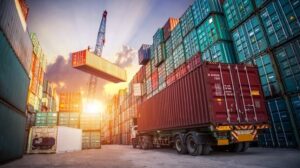The Logistics And Warehousing Sector
According to Statistics Indonesia (BPS), the logistics and warehousing sector will grow by 3.24 percent (YoY) in 2021, an increase of 18.29 points over 2020. Although not as strong as in 2019, growth reached 6.39 percent, but the sector has begun to recover and is back on track after a drastic decrease in 2021 due to Social Restrictions during the Covid-19 pandemic.
One of the reasons for the recovery of logistics services is the increase in investment activities in Indonesia in 2021. The Investment Coordinating Board (BKPM) reported that investment in the sector will total IDR 901.02 trillion in 2021. This figure has surpassed the President of the Republic of Indonesia’s target of IDR 900 trillion. The operations and movement of people, goods, and money will return as a result of investment activities. It is estimated that investment in 2021 will employ 1.2 million Indonesians across 133,258 projects.

According to VISI, the logistics and warehousing sector will grow by 1.32 percent in 2022. (y-o-y). The manufacturing sector, particularly non-oil and gas, drove this growth, followed by the agriculture, forestry, and fishery sectors, the trade sector, the construction sector, and the mining sector. The logistics and warehousing sector’s performance was also influenced by export-import performance, which improved further in 2021. According to BPS data, the value of exports increased by 49.70 percent year on year in November 2021, while imports increased by 52.62 percent (y-on-y).
However, because the growth forecast for 2022 is relatively thin, logistics service providers must conduct business planning in 2022. With good volumes and growth rates, market segmentation can be strengthened and expanded across several sectors and groups of products or commodities. Furthermore, more attention must be paid to social changes and business patterns that affect logistics operations, such as the sharing economy, logistics marketplaces, omnichannel logistics, and from a technological standpoint.
The increase in operational costs will be a challenge for businesses in the logistics and warehousing sector. The rise in energy costs, the continued rise in sea freight rates, and the rise in labor wages will create a conundrum for businesses, as will the rising market value of the logistics industry, which has the potential to erode business margins if operations management is not carried out properly.
Implementing efficient logistics operations management, as well as increasing throughput capacity and logistics service capacity, will play an important role in capitalizing on the momentum of Indonesia’s economic recovery in 2022.

